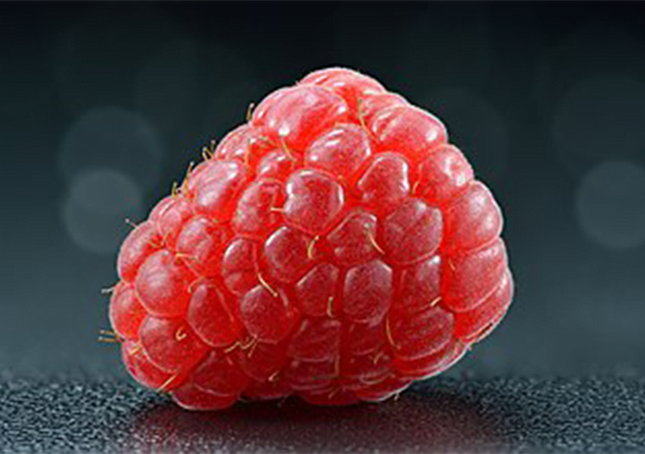Raspberry

The raspberry is the edible fruit of a multitude of plant species in the genus Rubus of the rose family, most of which are in the subgenus Idaeobatus. The name also applies to these plants themselves. Raspberries are perennial with woody stems.
World production of raspberries in 2018 was 870,209 tonnes, led by Russia with 19% of the world total.
Raspberry derives its name from raspise, “a sweet rose-colored wine” (mid-15th century), from the Anglo-Latin vinum raspeys, or from raspoie, meaning “thicket”, of Germanic origin.[1] The name may have been influenced by its appearance as having a rough surface, related to Old English rasp or “rough berry”.
Various kinds of raspberries can be cultivated from hardiness zones 3 to 9.[2] Raspberries are traditionally planted in the winter as dormant canes, although planting of tender, plug plants produced by tissue culture has become much more common.
A specialized production system called “long cane production” involves growing canes for a year in a northern climate such as Scotland or Oregon or Washington, where the chilling requirement for proper bud break is attained, or attained earlier than the ultimate place of planting. These canes are then dug, roots and all, to be replanted in warmer climates such as Spain, where they quickly flower and produce a very early season crop. Plants are typically planted 2-6 per m in fertile, well drained soil; raspberries are usually planted in raised beds/ridges, if there is any question about root rot problems.
All cultivars of raspberries have perennial roots, but many do not have perennial shoots. In fact, most raspberries have shoots that are biennial (meaning shoots grow in the first growing season and fruits grow on those shoots during the second growing season).[3] The flowers can be a major nectar source for honeybees and other pollinators.
Raspberries are vigorous and can be locally invasive. They propagate using basal shoots (also known as suckers), extended underground shoots that develop roots and individual plants. They can sucker new canes some distance from the main plant. For this reason, raspberries spread well, and can take over gardens if left unchecked. Raspberries are often propagated using cuttings, and will root readily in moist soil conditions.
The fruit is harvested when it comes off the receptacle easily and has turned a deep color (red, black, purple, or golden yellow, depending on the species and cultivar). This is when the fruits are ripest and sweetest.
High tunnel bramble production offers the opportunity to bridge gaps in availability during late fall and late spring. Furthermore, high tunnels allow less hardy floricane-fruiting raspberries to overwinter in climates where they would not otherwise survive. In the tunnel plants are established at close spacing usually prior to tunnel construction.
